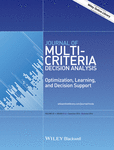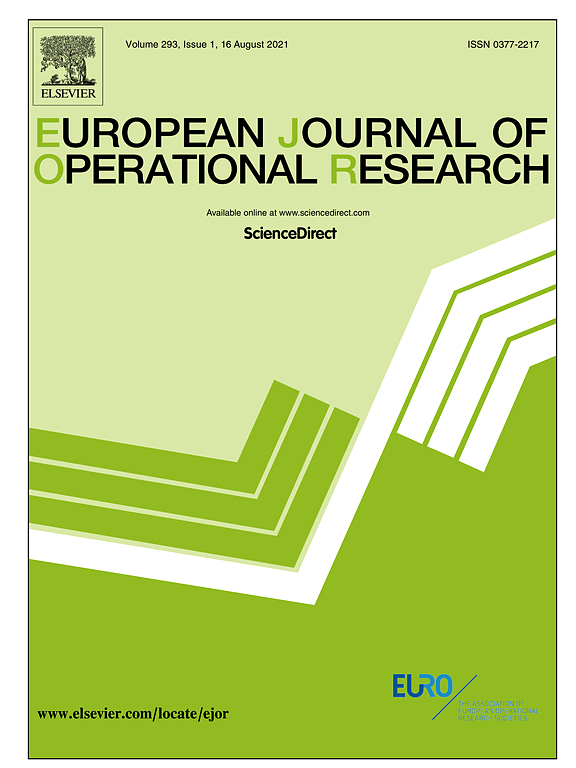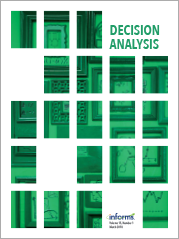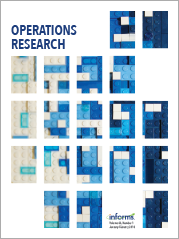Combining Value‐Focused Thinking and Balanced Scorecard to Improve Decision‐Making in Strategic Management
Goal orientation is key to strategic management. In this field, the Balanced Scorecard is one of the most widely used management tools. It structures a company’s main objectives from different perspectives based on the strategy of the firm and uses performance indicators to measure the achievement of objectives and strategy. However, its method of creation is not theoretically sound. Value‐focused thinking is a decision‐making philosophy that fits perfectly with Balanced Scorecard creation. It provides methods and techniques for the identification and structuring of objectives that are suitable to systematically derive a scorecard from a means‐ends network. However, such a means‐ends network is often too complex for enduring use in strategic management. By adapting the network’s structure to the Balanced Scorecard’s layout, the profound and clear set of derived objectives and their measures serve as a reasonable basis for applying methods of multi‐criteria decision‐making in an organization.
This paper aimed to outline a procedure that merges the Balanced Scorecard and value‐focused thinking by preserving each concept’s strengths while eliminating their weaknesses. A six‐step process was developed theoretically and employed empirically in a case study. This process included (1) identifying objectives; (2) structuring objectives; (3) characterizing clusters of objectives; (4) formulating mission, vision, and strategy; (5) designing the scorecard; and (6) monitoring and adapting to change. On the basis of this approach, a Management Scorecard was produced that enabled strategy development and execution, put forth a clear and comprehensive means‐ends network, and visualized a company’s most important objectives and their relationships structured through perspectives roughly following the Balanced Scorecard. It acts as a foundation for research to generalize and compare findings regarding goals of organizations. Our procedure demonstrates how scientific methods, such as value‐focused thinking, can yield benefits to practitioners’ instruments, like the Balanced Scorecard, and how management tools can likewise improve scientific methods.
Developing and Validating the Multidimensional Proactive Decision-Making Scale
On the basis of an extensive interdisciplinary literature review proactive decision-making (PDM) is conceptualised as a multidimensional concept. We conduct five studies with over 4,000 participants from various countries for developing and validating a theoretically consistent and psychometrically sound scale of PDM.
The PDM concept is developed and appropriate items are derived from literature. Six dimensions are conceptualised: the four proactive cognitive skills ‘systematic identification of objectives’, ‘systematic search for information’, ‘systematic identification of alternatives’, and ‘using a ‘decision radar’’, and the two proactive personality traits ‘showing initiative’ and ‘striving for improvement’. Using principal component factor analysis and subsequent item analysis as well as confirmatory factor analysis, six conceptually distinct dimensional factors are identified and tested acceptably reliable and valid.
Our results are remarkably similar for individuals who are decision-makers, decision analysts, both or none of both with different levels of experience. There is strong evidence that individuals with high scores in a PDM factor, e.g. proactive cognitive skills or personality traits, show a significantly higher decision satisfaction. Thus, the PDM scale can be used in future research to analyse other concepts. Furthermore, the scale can be applied, e.g. by staff teams to work on OR problems effectively or to inform a decision analyst about the decision behaviour in an organisation.
Identifying and Structuring the Objectives of the Islamic State of Iraq and The Levant (Isil) and its Followers
This study addressed three questions: 1. What are the objectives of the leaders of ISIL? 2. What are the objectives of the followers of ISIL? 3. How are the two sets of objectives related? To answer these questions we analyzed the transcripts of interviews and presentations of 59 subject matter experts (SMEs) and conducted a separate analysis of speeches of ISIL leaders and selected Internet sources. In both efforts we identified and structured the strategic, fundamental, and means objectives of ISIL and its followers.
The results indicate that ISIL’s leaders pursue four strategic objectives: Establish a Caliphate in Iraq and the Levant, Control and Govern the Caliphate, Expand Islam and Sharia Law Worldwide, and Recreate the Power and Glory of (Sunni) Islam. The followers’ objectives can be partitioned into three strategic objectives: Humanitarian Fulfillment, Religious Fulfillment and Personal Fulfillment.
The objectives identified from the SME interviews were similar to those identified from ISIL leaders’ statements and the Internet. However, the Internet search revealed many more personal objectives of ISIL followers. The results further indicate that ISIL’s leadership objectives are closely aligned with those of its followers. There also is a sharp contrast between the objectives of ISIL and those of Al Qaeda, particularly ISIL’s emphasis on occupying and controlling territories in Iraq and Syria vs. Al Qaeda’s focus on worldwide jihad.
Creating More and Better Alternatives for Decisions Using Objectives
The quality of alternatives is crucial for making good decisions. This research, based on five empirical studies of important personally relevant decisions, examines the ability of decision makers to create alternatives for their important decisions and the effectiveness of different stimuli for improving this ability. For decisions for which the full set of potentially desirable alternatives is not readily apparent, our first study indicates that decision makers identify less than half of their alternatives and that the average quality of the overlooked alternatives is the same as those identified. Four other studies provide insight about how to use objectives to stimulate the alternative-creation process of decision makers and confirm with high significance that such use enhances both the number and quality of created alternatives. Using results of the studies, practical guidelines to create alternatives for important decisions are presented.



